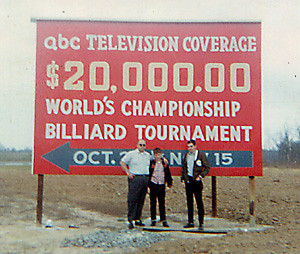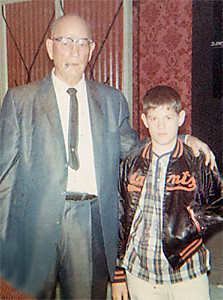It would have been 1982 or so, back during my college days, and a friend of mine had just handed me a copy of Hustlers, Beats and Others. The book was the width of a Lucky Strike cigarette. A real thin paperback. I remember the pages were dog-eared and coffee stained.
My friend had discovered Hustlers, Beats and Others atop a pile of similarly musty books at an Austin thrift shop. He figured — quite correctly as it turned out — that this book would interest me. He paid a quarter for it. "Check this out," he said, grabbing the book back for a moment. "Right here. There's a whole section here on hustlers."
Hustlers, Beats and Others is about exactly what it says it is about. New York sociologist Ned Polksy, the author, describes the lives of beatniks, petty thieves and pool hustlers. He examines them almost as if he were examining members of a tribe, writing about both their gathering places and their customs. My friend gave me the book because he knew I was familiar with the game. But the pool halls described in it were nothing I recognized. In Polksy's world, serious men argued over "spots," made giant wagers and sometimes cheated one another. In mine, college kids played for beers.
Flash forward: I graduated from the University of Texas in 1986 and then bounded off to Costa Rica, where I had accepted work at The Tico Times, an English language newspaper. Not long afterwards Touchstone Pictures released The Color of Money, the pool film starring Paul Newman and Tom Cruise. A bunch of us ex-patriot reporters bounded out to the local movie theater to see a subtitled version of the film and then afterwards, inspired, we ventured into a San Jose pool hall. It was up a flight of cement stairs. I remember having to step over a drunk.
The room was called Center Pool and it was unlike any I had ever seen. These were not surbanites playing pool. These were not college kids winding down after their bio-chem exams. These were serious players, men not running two balls or three, but entire racks in succession. I thought I was good, but I had no idea what good was. These men were playing on giant tables, the largest I'd ever seen — and they made long cut shots and crazy caroms and they gambled. Money, Costa Rican colones, glided back and forth between the players. Even the spectators were placing bets. It donned on me then that these men hardly ever left the pool hall. I realized that this was their home. It was a culture exactly as Ned Polksy had described it.
Our assignment for this month's installment of PoolSynergy was to describe how we came to love pool. So that's my story, more or less. I fell in love with the sport as it was played in Costa Rica, which seemed to match the descriptions from Polksy's book. You can see the sociologist's influence in The Hustler & The Champ and Hustler Days, my books about the early years of American pool. Of course I had other influences too, not the least of which was my Uncle Rob, who was the first pool shark I ever knew. But those days in Costa Rica left quite an impression.
At the top of this post I've embedded a Super8 film I shot at Center Pool, a room that sadly no longer exists. You can also read other PoolSynergy essays by clicking through the Angle of Reflection blog, which you can find here.
-- R.A. Dyer












